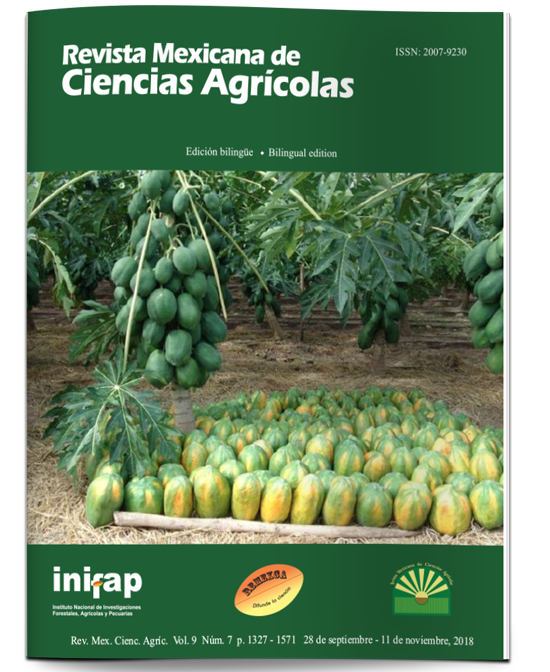Toxicity of a botanical insecticide on Bombus impatiens, Apis mellifera, Chrysoperla carnea and Orius insidiosus
DOI:
https://doi.org/10.29312/remexca.v9i7.851Keywords:
Chrysoperla carnea, Orius insidiosus, biorational insecticides, pollinatorsAbstract
The indiscriminate use of synthetic insecticides increases the risks of contamination to the environment, damage to health and reduction of populations of beneficial organisms, as well as selection of resistance of pests to these products. Given this scenario, efficient and less harmful alternatives are required for humans and non-target organisms. In this research the acute toxicity of botanical insecticide-acaricide BIODIe® (based on plant extracts of castor bean, chicalote and berberis) was evaluated on two pollinators -bees and bumblebees- and on the predators Chrysoperla carnea and Orius insidiosus, three methodologies were used of exposure: direct contact, residual contact and oral toxicity. The botanical insecticide was slightly toxic to the pollinators and predators studied, and was classified in category 1 of the international biological control organization (IOBC) due to low mortality (<25%). This suggests that this product represents low risks for non-target organisms in their implementation in integrated pest management.
Downloads
Downloads
Published
How to Cite
Issue
Section
License
The authors who publish in Revista Mexicana de Ciencias Agrícolas accept the following conditions:
In accordance with copyright laws, Revista Mexicana de Ciencias Agrícolas recognizes and respects the authors’ moral right and ownership of property rights which will be transferred to the journal for dissemination in open access. Invariably, all the authors have to sign a letter of transfer of property rights and of originality of the article to Instituto Nacional de Investigaciones Forestales, Agrícolas y Pecuarias (INIFAP) [National Institute of Forestry, Agricultural and Livestock Research]. The author(s) must pay a fee for the reception of articles before proceeding to editorial review.
All the texts published by Revista Mexicana de Ciencias Agrícolas —with no exception— are distributed under a Creative Commons License Attribution-NonCommercial 4.0 International (CC BY-NC 4.0), which allows third parties to use the publication as long as the work’s authorship and its first publication in this journal are mentioned.
The author(s) can enter into independent and additional contractual agreements for the nonexclusive distribution of the version of the article published in Revista Mexicana de Ciencias Agrícolas (for example include it into an institutional repository or publish it in a book) as long as it is clearly and explicitly indicated that the work was published for the first time in Revista Mexicana de Ciencias Agrícolas.
For all the above, the authors shall send the Letter-transfer of Property Rights for the first publication duly filled in and signed by the author(s). This form must be sent as a PDF file to: revista_atm@yahoo.com.mx; cienciasagricola@inifap.gob.mx; remexca2017@gmail.
This work is licensed under a Creative Commons Attribution-Noncommercial 4.0 International license.



